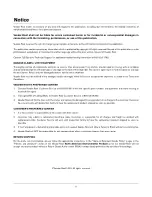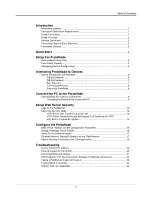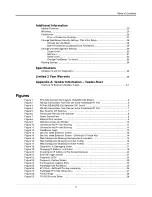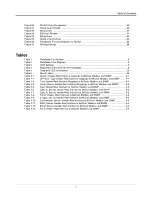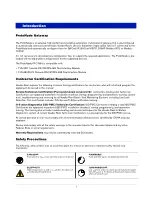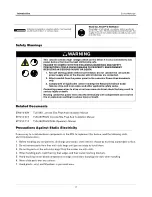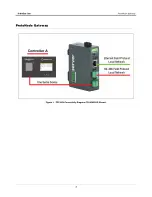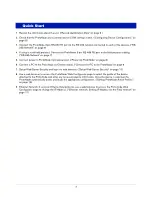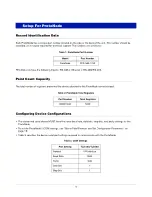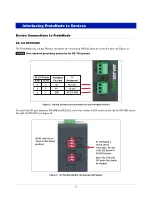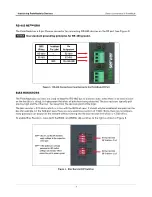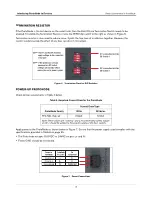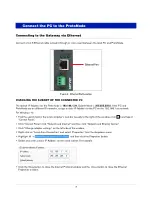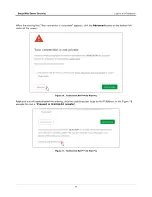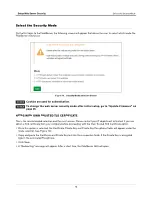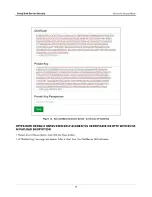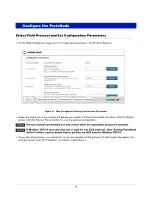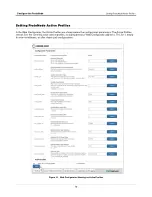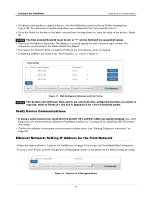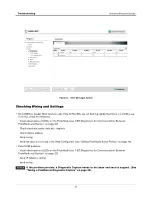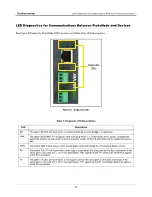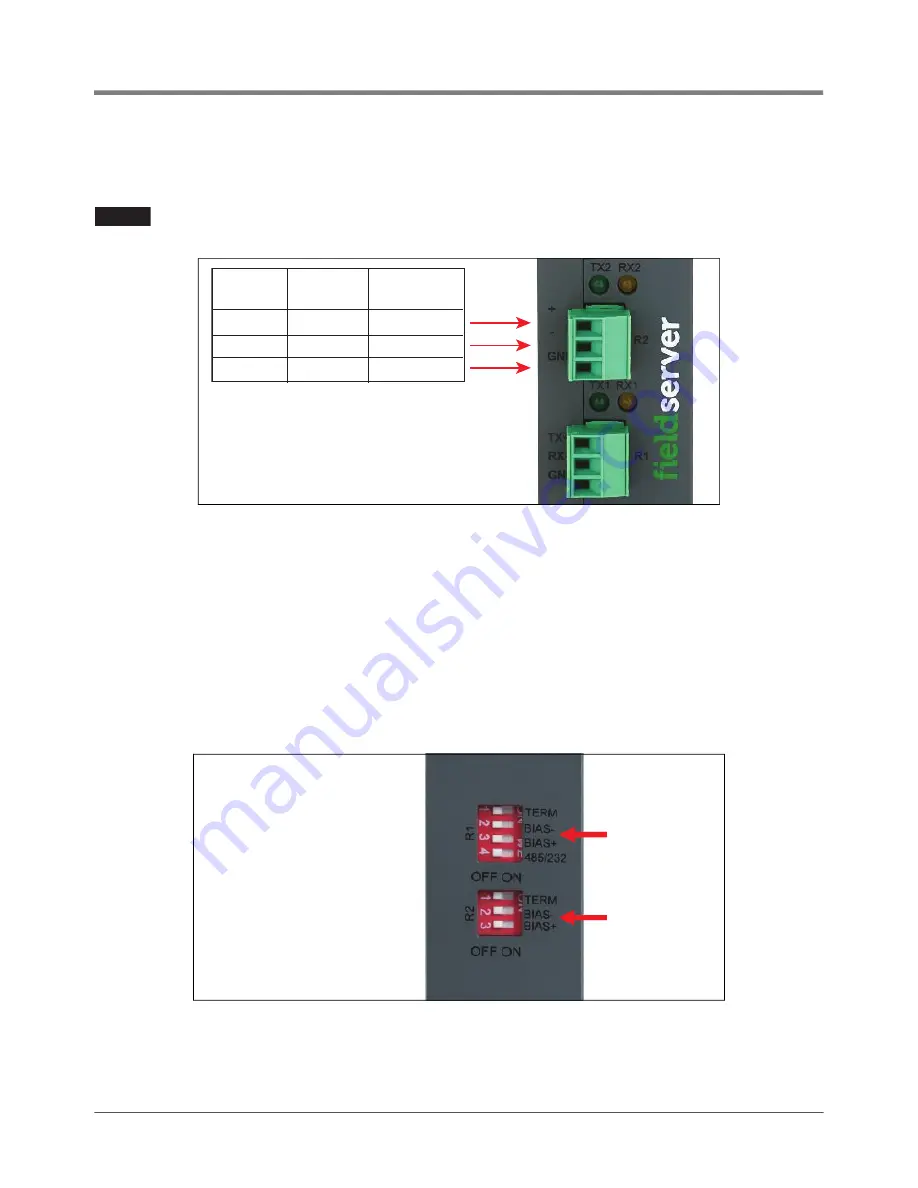
7
Interfacing ProtoNode to Devices
Device Connections to ProtoNode
RS-485 NETWORK
The ProtoNode has a 3-pin Phoenix connector for connecting RS-485 devices on the R2 port (see Figure 4).
Use standard grounding principles for RS-485 ground.
Figure 4. RS-485 Connections from Devices to the ProtoNode R2 Port
BIAS RESISTORS
The ProtoNode bias resistors are used to keep the RS-485 bus to a known state, when there is no transmission
on the line (bus is idling), to help prevent false bits of data from being detected. The bias resistors typically pull
one line high and the other low - far away from the decision point of the logic.
The bias resistor is 510 ohms which is in line with the BACnet spec. It should only be enabled at one point on the
bus (for example, on the field port were there are very weak bias resistors of 100k). Since there are no jumpers,
many gateways can be put on the network without running into the bias resistor limit which is < 500 ohms.
To enable Bias Resistors, move both the BIAS- and BIAS+ dip switches to the right as shown in Figure 5.
Figure 5. Bias Resistor DIP Switches
NOTICE
+
-
GND
RS-485+
RS-485-
RS-485 GND
RS-485+
RS-485-
-
ProtoNode
Pin Label
BMS
Wiring
Pin
Assignment
R1 Bias Resistor
DIP Switches 2 & 3
R2 Bias Resistor
DIP Switches 2 & 3
NOTE: The R1 and R2 DIP Switches
apply settings to the respective
serial port.
NOTE: If the gateway is already
powered on, DIP switch
settings will not take effect
unless the unit is power cycled.


